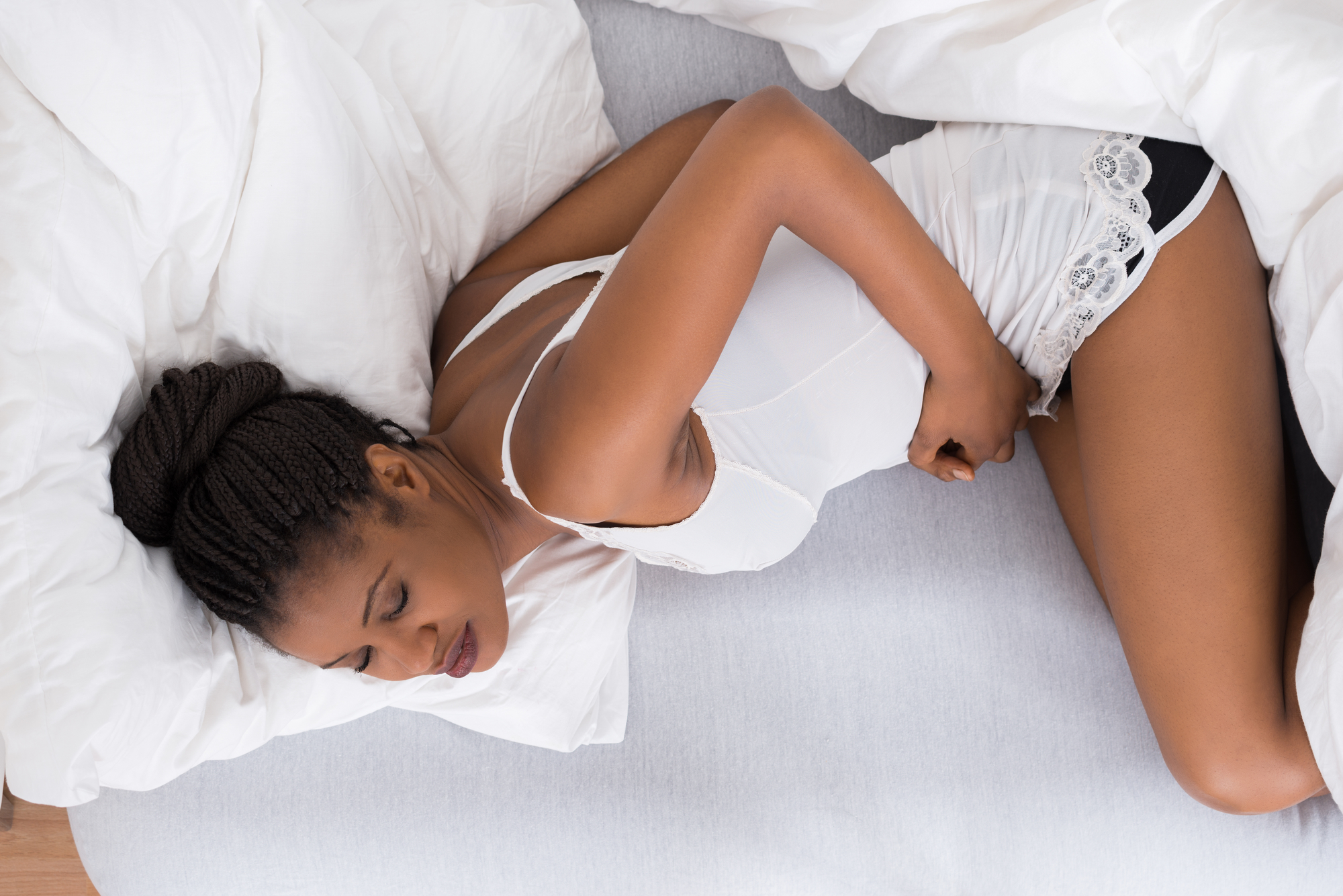For most of my teens and early-20s, my cycle ran like clockwork. Every 28 days. Minimal cramping. Moderate flow. Run-of-the mill moodiness. Then all of a sudden, in my mid- to late-20s, shit hit the fan.
I started bleeding for two weeks at a time. The flow was something closer to a crime scene than a scraped knee. I was going through tampons on an hourly basis and passing clots that looked like small organs. And the cramps? Well, let’s just say that with pain like that, I may have seen Jesus, Muhammad, Gabriel, and all the angels.
After suffering through that nonsense for a couple of months, I realized it probably wasn’t a fluke and started researching possible causes for the fresh hell I was experiencing. I made an appointment with my gynecologist, had a few tests done, and was eventually told that I had uterine fibroids.
What the what? Fibroids? Aren’t those for middle-aged women? I was only in my 20s. How could I have fibroids? And what did that mean for future childbearing options?
Turns out, uterine fibroids — noncancerous growths — are quite common and not something that only middle-aged or menopausal women experience; they can appear at any time during childbearing years. Doctors still aren’t completely sure what causes them, but suspect hormones (those pesky buggers) might have something to do with it. They don’t create an increased risk of cancer or other serious medical conditions, and for many women, fibroids are a non-issue or a minor inconvenience. In fact, according to NIH, about 70–80% of women will have fibroids by the time they reach the age of 50, but only about 30% of women between the ages of 25 and 44 have any symptoms.
Because fibroids don’t have symptoms nor cause medical problems for many women, one of the most common treatment options is the wait-and-see approach. They grow slowly, and often shrink after menopause. So if they aren’t causing any significant problems, doctors are hesitant to resort to medication or surgery.
For other women, like me, fibroids can be a real pain in the ass. Symptoms can include heavy bleeding, painful periods, bleeding between periods, pelvic pressure, frequent urination, pain during sex, lower-back pain, and reproductive problems such as infertility or recurrent miscarriage.
Medication can help some women; for others, noninvasive or minimally invasive surgery might be required. In my situation, the fibroids were removed through a hysteroscopic myomectomy, which is basically a fancy way of saying that my doctor removed them vaginally and without cutting my belly open. A small number of women may need a hysterectomy, which is the compete removal of the uterus.
With all procedures other than a hysterectomy, there’s a chance that “seedlings” — or tiny fragments of the growths — will regrow or new fibroids could develop, which is what happened to me, and a year after my first surgery, I was back in the doctor’s office again preparing for another procedure.
Two babies later, I’m fibroid-free. Or at least I think I am. I’m symptom-free, at least, and that’s good enough for me.
If you’ve had fibroids, you’re not alone. If you’re experiencing any changes in your cycle, see your doctor. Your health is of utmost importance, and you don’t need to suffer through long, heavy, and painful periods. There are treatment options.
Now those raging PMS mood swings, on the other hand…that’s a different story.


